I would never normally spend £600 on an air purifier, but the Dyson Purifier Hot + Cool has me convinced
Regularly overheating? Constantly sneezing? Always freezing? This has you covered.
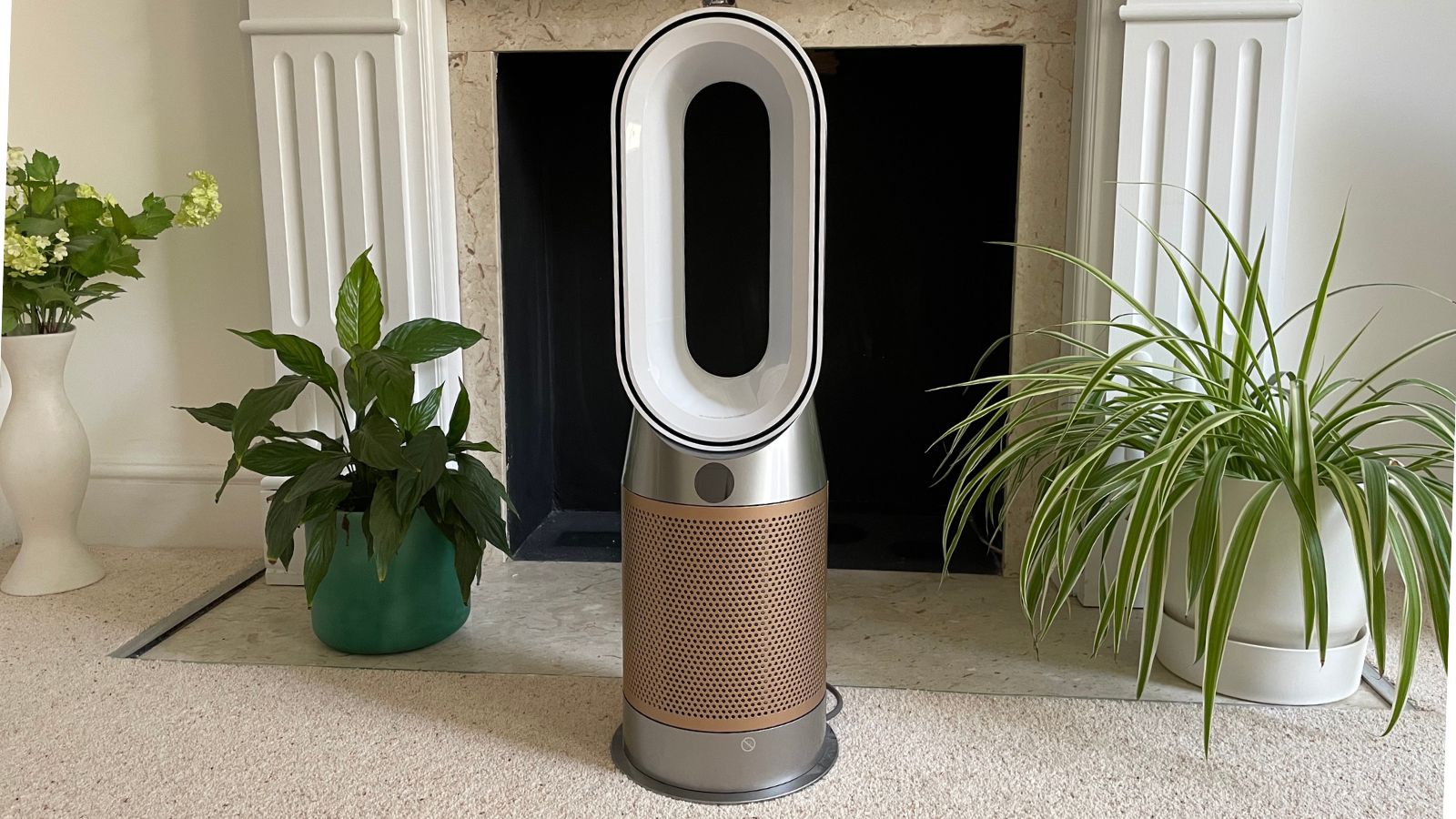
If you can justify the price tag, this is the most versatile and effective air purifier-fan out there. It'll heat a room in next to no time and then cool it back down even faster. I filled a room with smoke and this got the air quality from 0 to 100 in less than 10 minutes. That's exactly what you're paying for.
-
+
Elegant and modern design
-
+
Works incredibly quickly and effectively
-
+
Versatile design combines heating, cooling, and air purifying
-
+
The best air filtration I've tested
-
+
One of the quietest and most efficient models
-
-
It's expensive (whichever way you cut it)
-
-
The modern design might not suit everyone
Why you can trust Woman & Home

Ordinarily, I would never spend £600 on an air purifier, or a fan, or a space heater, but the Dyson Hot + Cool makes a compelling case. It's all three different functions rolled in to one, modern appliance. If you do the maths, that's like spending £200 on an air purifier, £200 on a heater, and £200 on a fan, but without having to buy three separate appliances. Tempting? I think so.
Dyson always makes waves in an industry, whether it's floorcare, air care, or hair care. The Dyson Purifier Hot + Cool Formaldehyde is another great example of their brilliance. Most of the best air purifiers and most effective cooling fans look like boxy air conditioning units, but the elegant hoop of the Hot + Cool strikes a subtle, yet chic silhouette. Beyond its beauty, the app and technology is clever enough to be useful and not too complicated for the less techy people amongst us (me included).
Over the last two years of testing, I've inadvertently given the Hot + Cool a serious run for its money. I filled the kitchen with smoke when I forgot there was a loaf of bread in the oven; the builders filled the air with dust when my roof collapsed; we've had record-high heat waves; and my heating broke over the winter. Each time the Dyson has restored my air quality and room temperature to nothing short of perfection quickly, efficiently, and quietly. It's an all-year-round hero, whatever the weather (and the air quality). So, is it worth £600? Absolutely.
Dyson Hot + Cool Formaldehyde Fan review
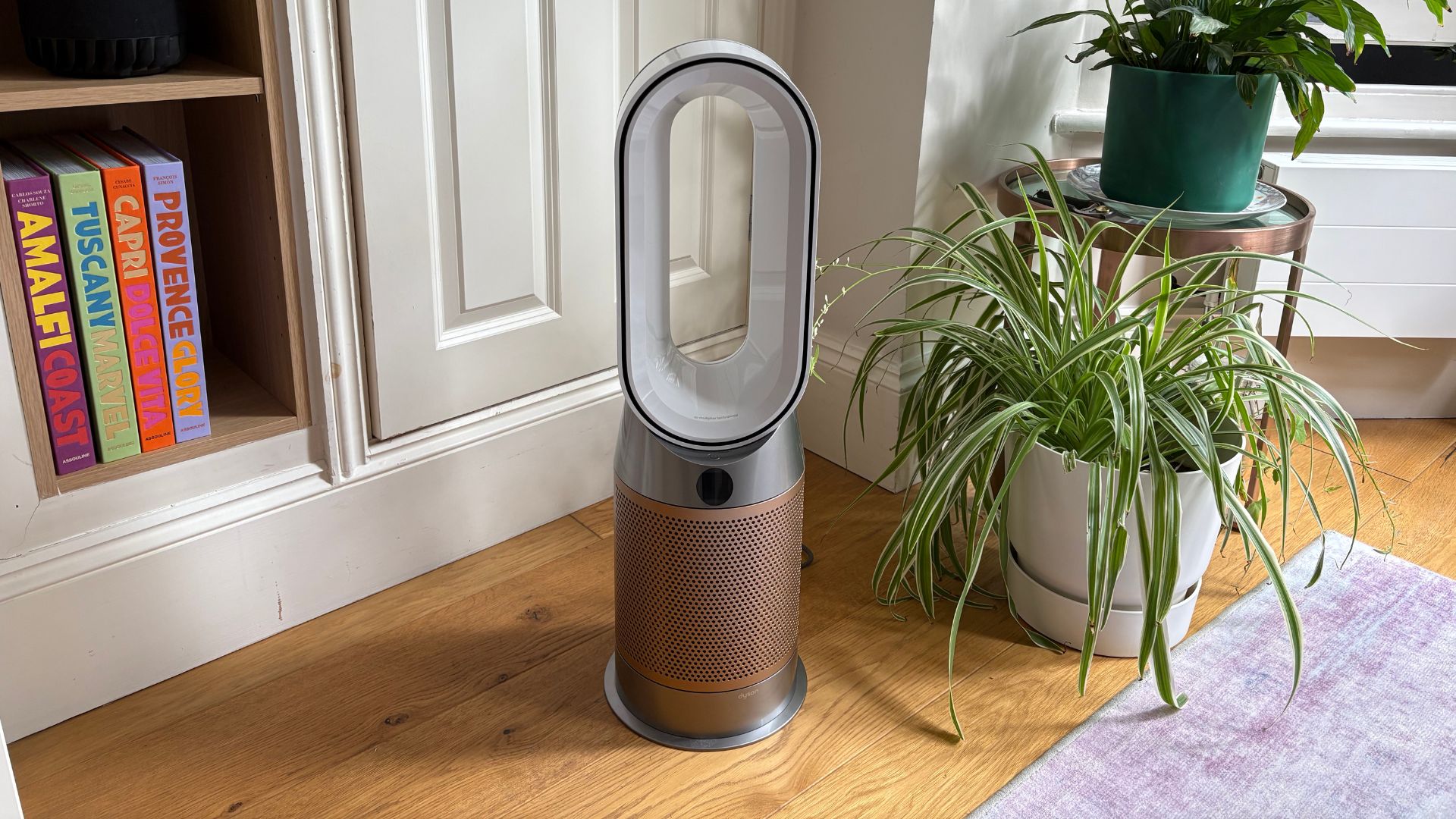
Dyson Hot + Cool Formaldehyde Fan Specifications
I've been using the Dyson Hot + Cool Formaldehyde Fan through two full years now, so the two of us are pretty well-acquainted. After the summer and winter, I've given this review updates with some of my experience so you can get a good idea of how this lasts over time.
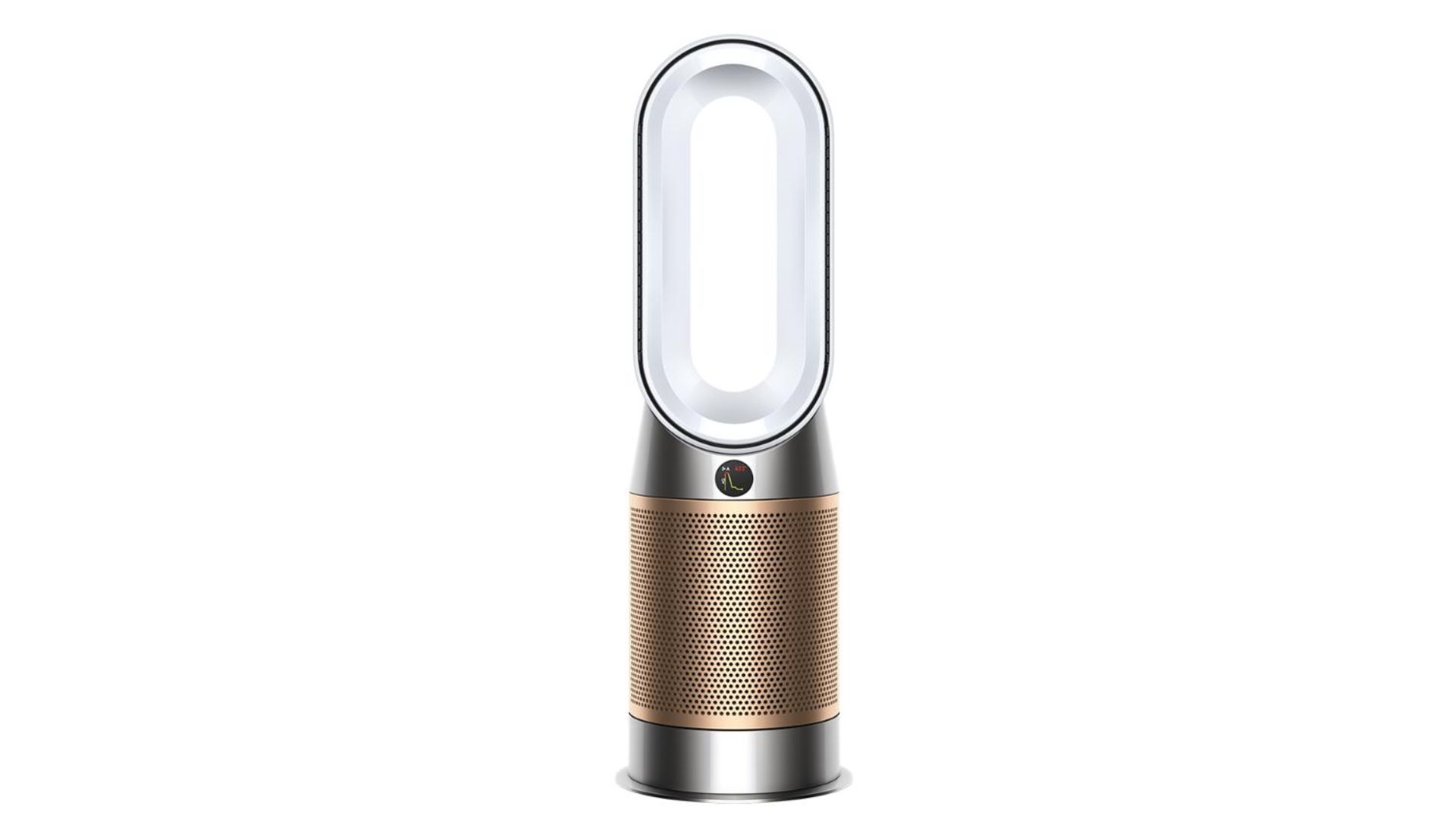
Dimensions | 76.4 x 15.3 cm |
Weight | 5.5 kgs |
Airflow at max | 290 l/s |
Oscillation | 350 degrees |
Cord lenth | 1.8 m |
Voltage | 240 V |
Filter | Glass fibre HEPA |
Unboxing the Dyson Hot + Cool Formaldehyde Fan
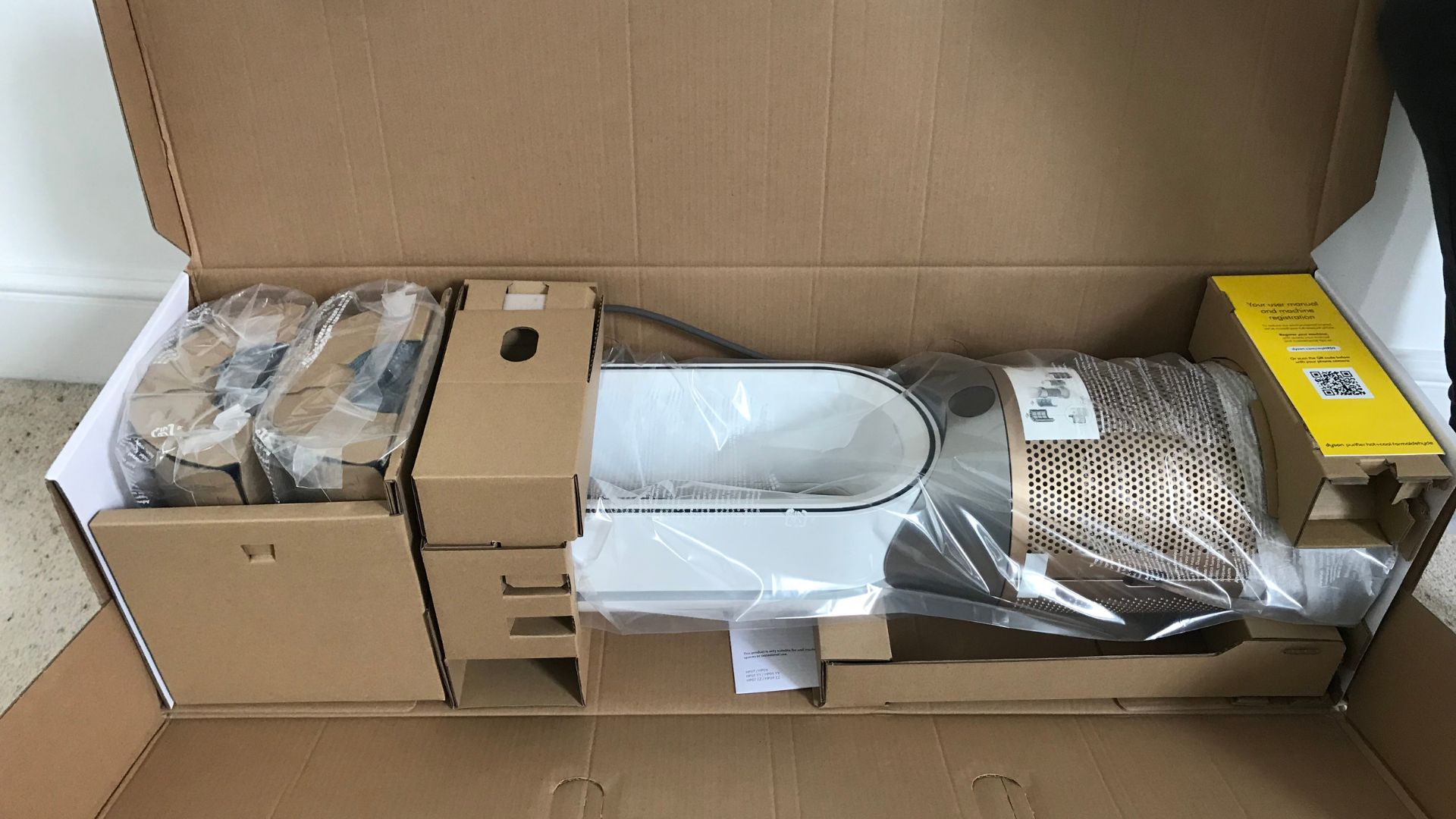
You'll be pleased to know that this is easy to unbox and move around. When I saw this on my doorstep, I didn't think I'd be able to lift the box (which is about the size of a small child), but it's actually really light. I wouldn't even worry about carrying this upstairs if you have a tall home. As long as its in the box, it's super portable.
When I wanted to get this set up, I opened the box. You can see that it's really neatly tucked into the cardboard with all the accessories around it. Almost all of the packaging is completely recyclable, although there will be some soft plastic sleeves, but these make up a tiny percentage of the overall waste.
To get this up and running, all I needed to do was clip in the filters. These go in the base of the Dyson, so you lift off the stickers holding both base plates in place, tilt them off, and put them in. Then, plug the Dyson in and it's good to go.
Sign up to our free daily email for the latest royal and entertainment news, interesting opinion, expert advice on styling and beauty trends, and no-nonsense guides to the health and wellness questions you want answered.
Alongside the main Dyson Purifier, you'll get a small remote controller. This is slim, simple, and easy to use. You don't need to buy a battery for it and I've used it to work the fan from over ten metres away. To stop you from losing the remote, Dyson has installed a magnet on the top of the air purifier. If you sit the remote on the stop of the hoop, it's held securely in place.
If you're a tech whizz, you could also set up the app, which lets you monitor and control the fan from your phone. I don't consider myself to be tech-savvy by any standards, so I don't always look forward to the app side of devices. However, in the case of the Dyson, I downloaded the app, connected the air purifier up to my WiFi, and my phone detected the fan. That's all that the set-up required. I didn't break a sweat and my stress levels didn't skyrocket either.
Who would the Dyson Hot + Cool Formaldehyde Fan suit?
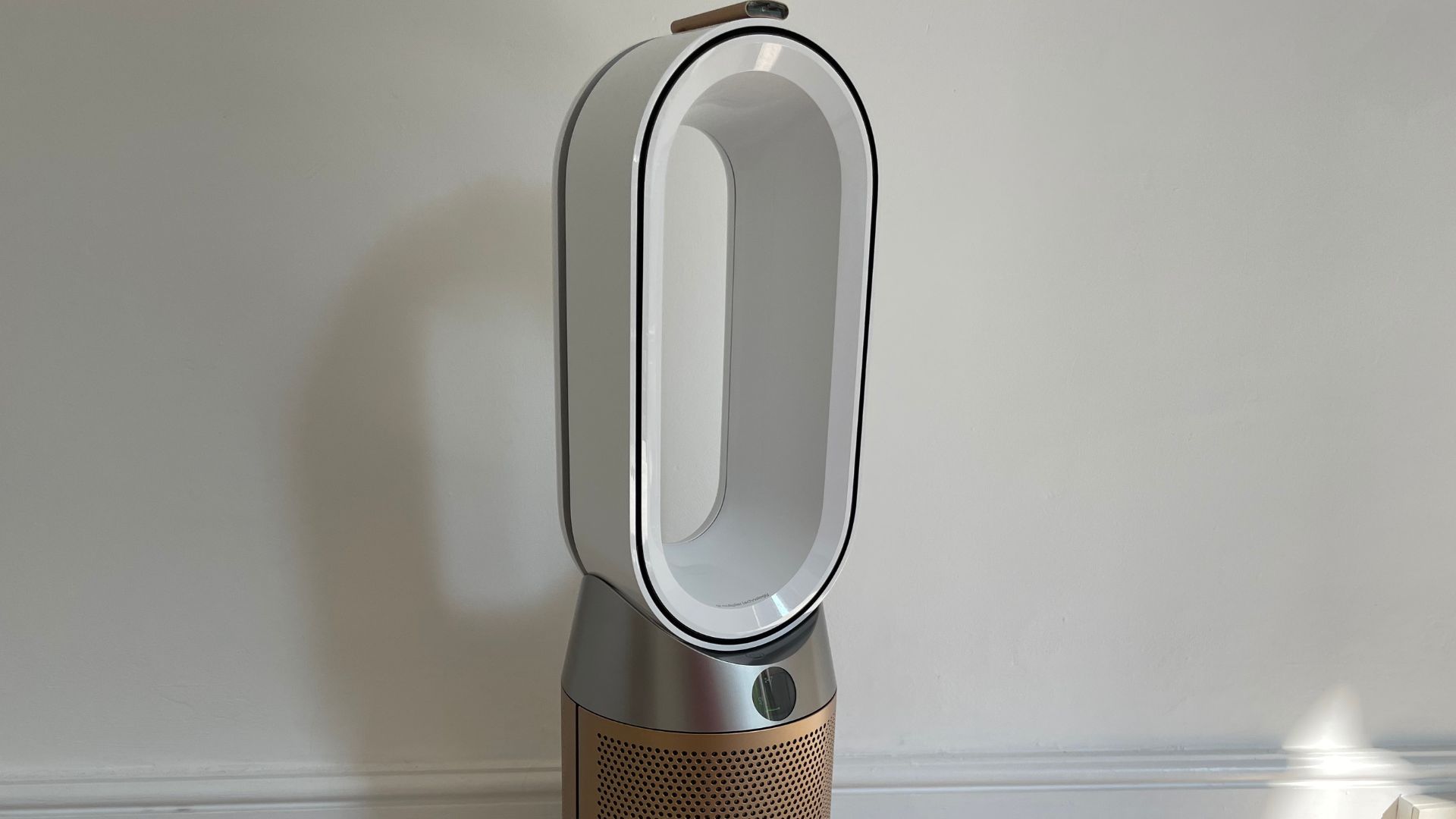
The Dyson is elegant by anybody's standards, especially in the world of air purifiers. So, if you plan on keeping this in one of your most lived-in rooms, it's a good idea to spend a little more money on style. The ultra-modern aesthetic might not suit everyone (and it's not exactly easy to disguise in the room), but it's better than most air purifiers which tend to be boxy and ugly.
Aside from the style-conscious amongst us, the Dyson is also a great option if you're looking for a quality appliance that can combine multiple functions in one. The beauty of the Hot + Cool is that it will purify your air, but it's also useful for temperature regulation. The heating components can take your room up to 37 °C and the cooling technology can bring it down to 1°C. You can use these alongside the air purifier, or you can just purify your air without any heating or cooling.
You'll see further down, but each function promised by the Dyson (air purifying, cooling, and heating) is executed without fault. It's quick, efficient, and quiet, so that's why I think the price tag is high, but also justifiable too. I could easily spend £200 on an air purifier, a fan, and a heater, and get exactly the same results as the Dyson - just with more clutter. Whether I would choose to spend all that money in those places is a different question and one that only you know for yourself.
So, the Dyson is well-suited to people who want versatile, luxurious appliances in their home. It comes with all the quality and guarantees that you would expect from the iconic brand, so you definitely don't feel hard done by. The only people who I wouldn't recommend this to are those who live in small spaces or homes with light air purifying needs. You can get great results for less money and a smaller model.
What is the Dyson Hot + Cool Formaldehyde Fan like to use?
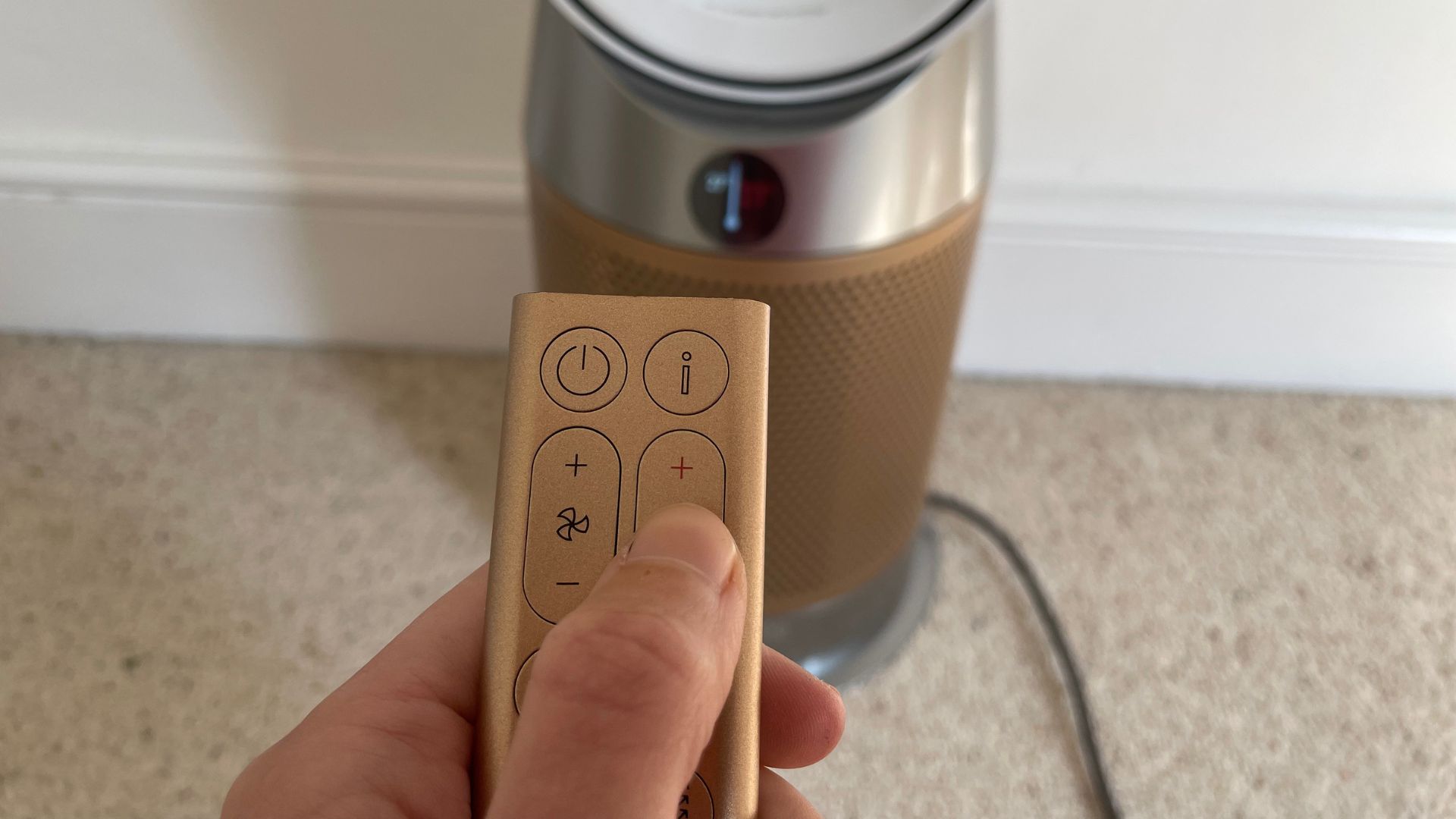
Whether you choose to control your Dyson via the app or with remote, it's all super simple. There's a round screen on the device that tells you your fan speed, target temperature, current temperature, and it'll give you a graph of your air quality. You can have access to historical data and pre-sets if you hop onto the app, but you don't really need to.
I tested this out across all the functions (which you'll hear more about below), but the one that I've found surprisingly useful is the timer. I go to bed in the heat and have the fan running. I select an hour timer and fall asleep with it cooling me and my bedroom. It's quiet and effective enough to send me off to a deep sleep and I don't find that I wake up from it (or the heat). It's also a nice touch to have the airflow on both sides of the fan, if you choose, so it can sit in the centre of the room.
Test 1: how the Dyson works as an air purifier
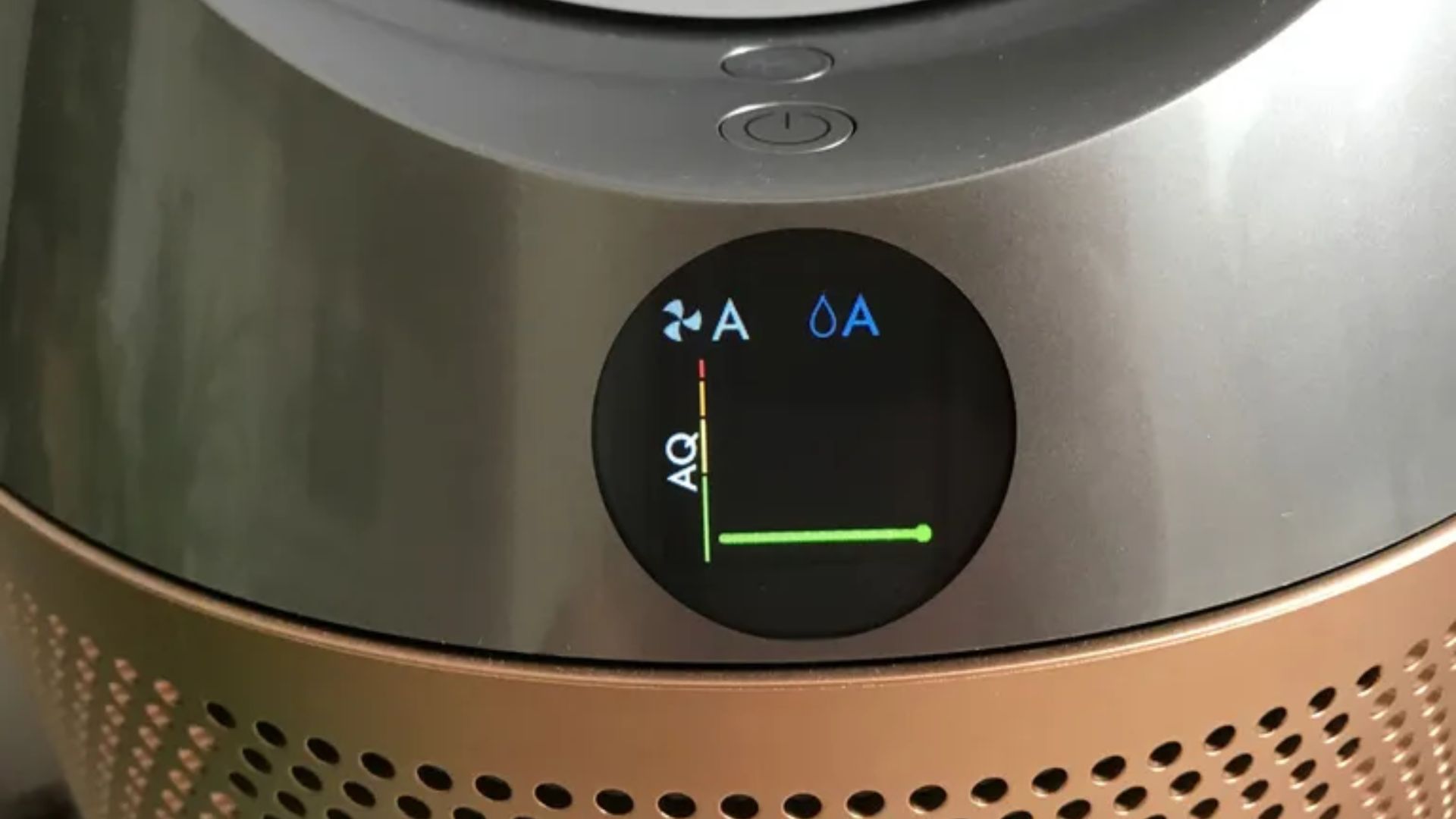
I live in a flat in central London, so when I open a window, the room isn't exactly filled with the scent of freshly mown grass, if you know what I mean. When I turned on the Dyson and the screen lit up, I got a little graph saying that my air quality was at 80. That's a score out of 100, so it's not an ideal number, but it's not bad.
The Dyson automatically starts running and working to get the air quality to 100. Within less than five minutes, my 45 square ft room had been brought to the top score for humidity and it stayed at that level for the whole time that it ran. I've been looking at the graphs of the air quality in my room and whenever the Dyson is on, my air quality is at 100. It's impressive.
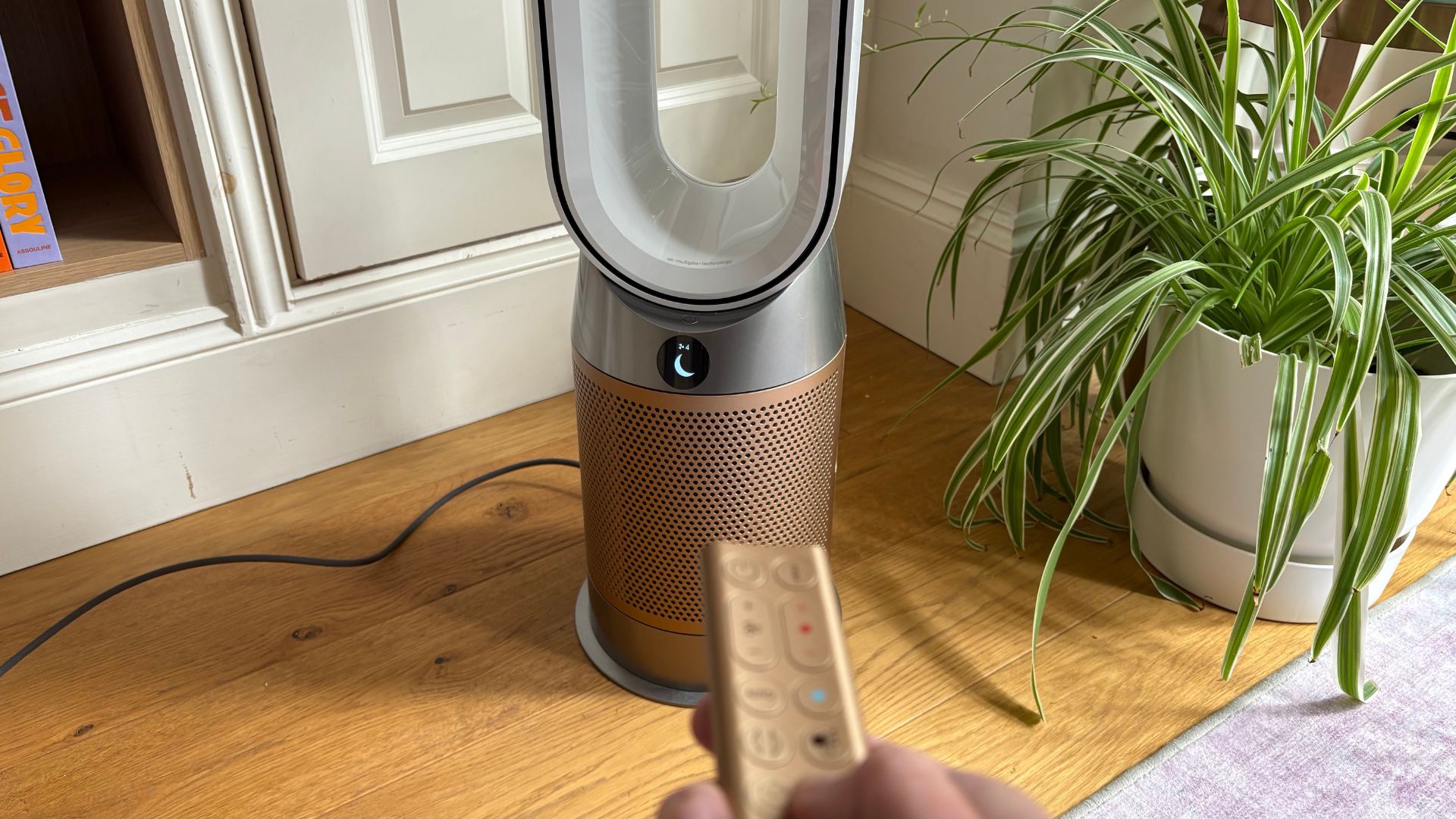
I have inadvertently given this a couple of tougher tests since for air purifying. The first was burning bread in my oven. I left a loaf cooking for two hours and when I opened the oven door smoke poured out. Of course, the alarm went off, I opened the windows and I set the Dyson running. In less than 20 minutes, my room still smelt of smoke, but the air quality was back to 100. Less than an hour later, the room was fresh. It was incredible.
Test number two was another accident. The ceiling of my flat collapsed (unplanned) throwing all sort of dust and debris everywhere in the room. The air was pretty grim and I wasn't sure whether running the Dyson would break it or save the air in my room. I opted to give it the test, setting it running and again it cleared the air in an incredible amount of time. It's impressive stuff.
Over the years we've had all sorts of pollutants make their way into our home. We've painted walls, left the windows on when there was a fire outside and this works really well at eliminating fragrances from the room. Lots of people smoke underneath my bedroom window, for example and yet you'd never know it from the smell of my room. It's brilliant.
Test 2: how the Dyson works as an cooling fan
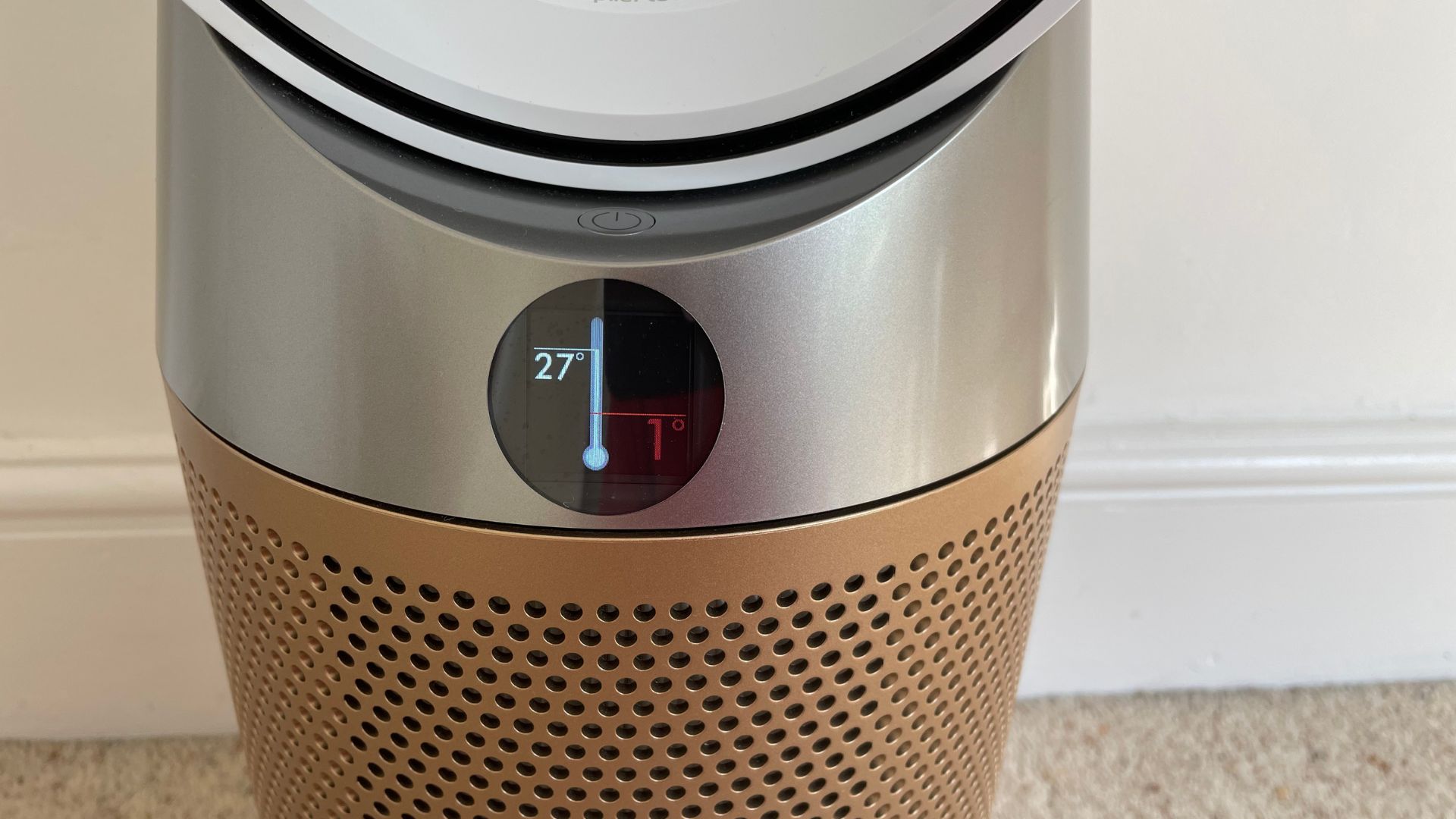
There are plenty of air purifiers that double-up as cooling fans, which makes sense, but not all of them do a good job of clearing the air. As far as I'm concerned, this is another one of the best cooling fans out there, regardless of whether it can air purify or not.
The same bread-burning, roof-collapsing flat has big windows and paper thin blinds, which is great for letting in light, but it means that the room turns into a greenhouse in the summer. My flat can consistently get to 28°C in the summer, which was is the cool space that I can get relief from the heat outside in, unless I have the Dyson running. You'll see in the picture that the Dyson can bring the room down to 1°C, which is extreme but impressive. For the few minutes that I had this working at 1°C, I was freezing. Sat in front of the fan, running that cool, is enough to dry the sweat off your face. To be honest, it's a little too cold.
The place where the Dyson's cooling fan is most useful is overnight, on a timer setting. The fan is quiet and effective enough to keep the room at a cool 16 °C (without keeping me up). Every time that I set this running, regardless of the room temperature, I actually didn't end up waking up from the heat, which is unheard of for me.
Test 3: how the Dyson works as a space heater
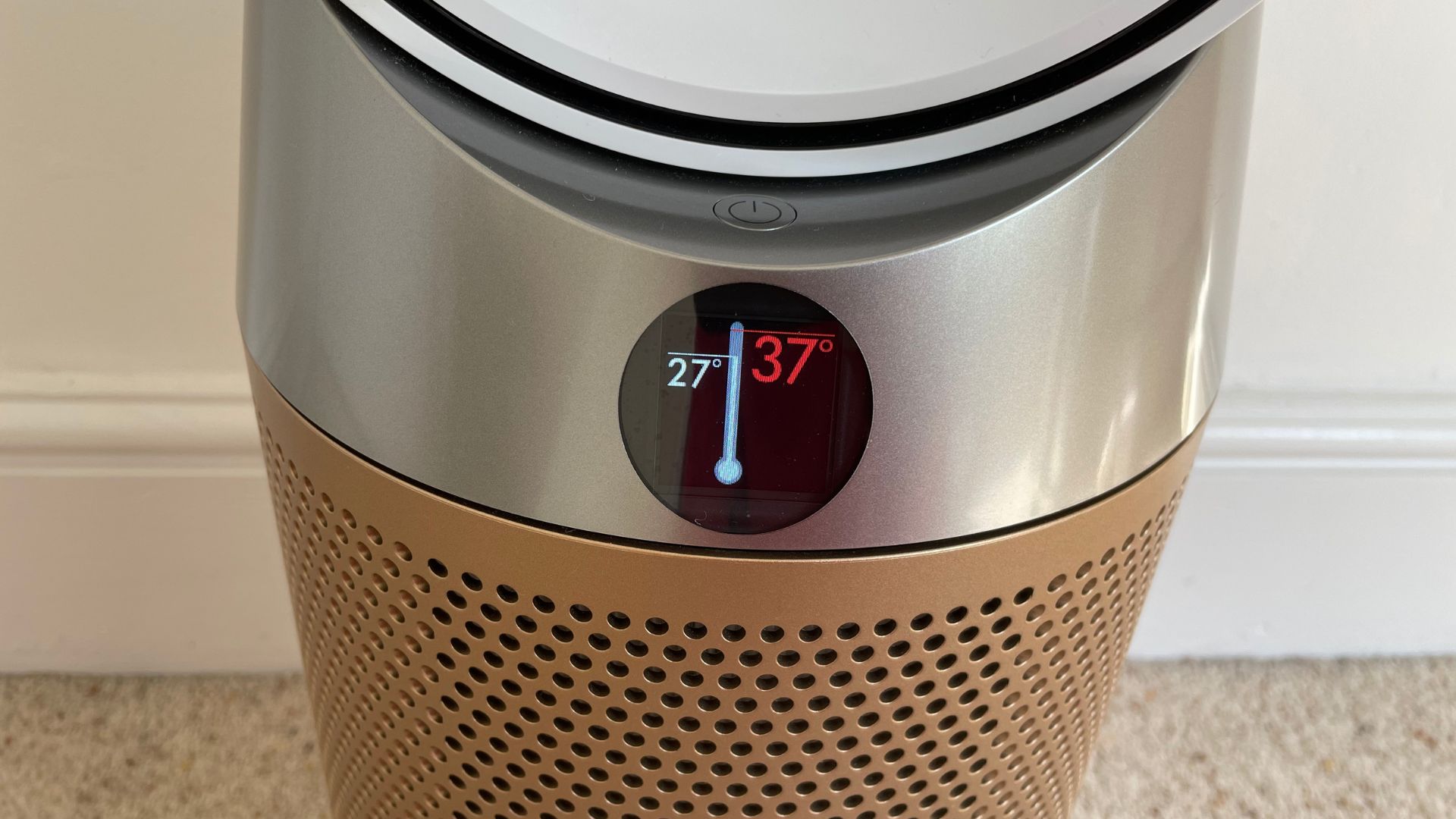
The last test to complete the trifecta of success is with heating and, you'll be pleased to know that the Dyson didn't disappoint. I've been through two very long and cold winters with this in my flat. I am one of those misers who will stubbornly refuse to turn the heating on in my house, so working from home often involves a lot of blankets and layers.
Testing the Dyson was a great opportunity to heat my house up, so I set this running at 20°C. After less than 20 minutes, the Dyson told me that the room was already at 20°C (from 16°C), so, in the name of testing, I cranked it up to 22 °C. Reliably, another 20 minutes later, my high-ceilinged room was up to 22°C. My friend came round for dinner that evening and actually commented on how hot the room was. I hadn't even noticed the Dyson working hard, it just effortlessly and evenly dispersed heat across the room. I was ready to be critical, but this is incredible.
What does the 'formaldehyde' bit mean?

Formaldehyde is thrown around a lot when talking about air purifiers, but does it work? Is it a gimmick? And does Dyson do it well? There are a lot of questions to answer there and I have a lot to say about it, but if you want the short version: yes, it generally does work; no it't not a gimmick; and as far as I can tell, Dyson does it well.
Essentially, when an air purifier has 'formaldehyde' in the name it means that the appliance is working to remove that specific molecule from the air. You're most likely to have formaldehyde in the air if you have an open fire or a gas stove since it is a byproduct of combustion (for kerosene, gasoline, wood, or tobacco). If you ask the experts, they'll say it's not a great compound to have in your home. When you breathe it in, you can have irritation in your air ways, nose, and throat.
So, an air purifier that can remove formaldehyde is really useful. The average air purifier has a filter that's a bit like coffee filter paper. It takes particulates out of the air, but it won't get all the formaldehyde and more gaseous toxins out of your air. More expensive air purifiers work to remove these gases from the air, namely formaldehyde. How do they do it? Each has their own technique, but the Dyson has pre-filters, activated carbon filters, and formaldehyde-specific filters. It's an impressive system that is hard to test (even in a laboratory), but I would rather have it than not. The Dyson got my air quality to 100 (even with an open fire, gas stove, and busy road nearby). On the graphs, it looked good. And, if my breathing is anything to go by, the air tasted good too.
Cleaning, storage, and maintenance on the Dyson Hot + Cool Formaldehyde Fan
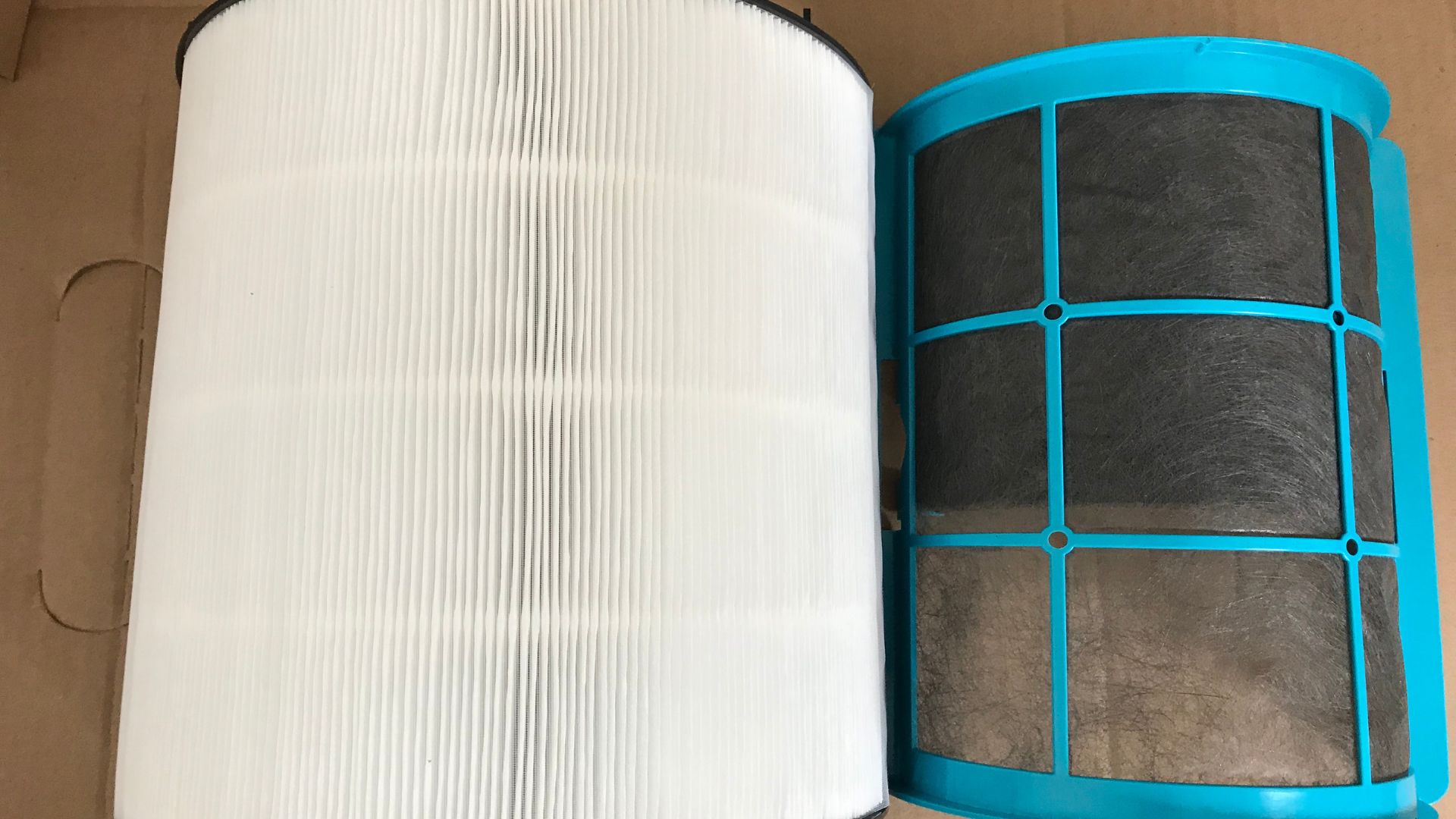
As with any air purifier, the Dyson needs occasional TLC. This isn't actually something that I dread, since the whole process of how to clean an air purifier is quick, simple, and it doesn't need to be repeated regularly.
All you'll have to do is remove the filter and wash it or replace it every three months. Or, at least, that's the official guidance from Dyson. In practice, I'm coming up to 10 months of having used this (remember the burnt loaf, the collapsed ceiling, and the busy road) and I've only had to do one replacement. That's not because the Dyson isn't doing a good job (it's great) it's more because the Dyson has a big enough filter that it's low maintenance.
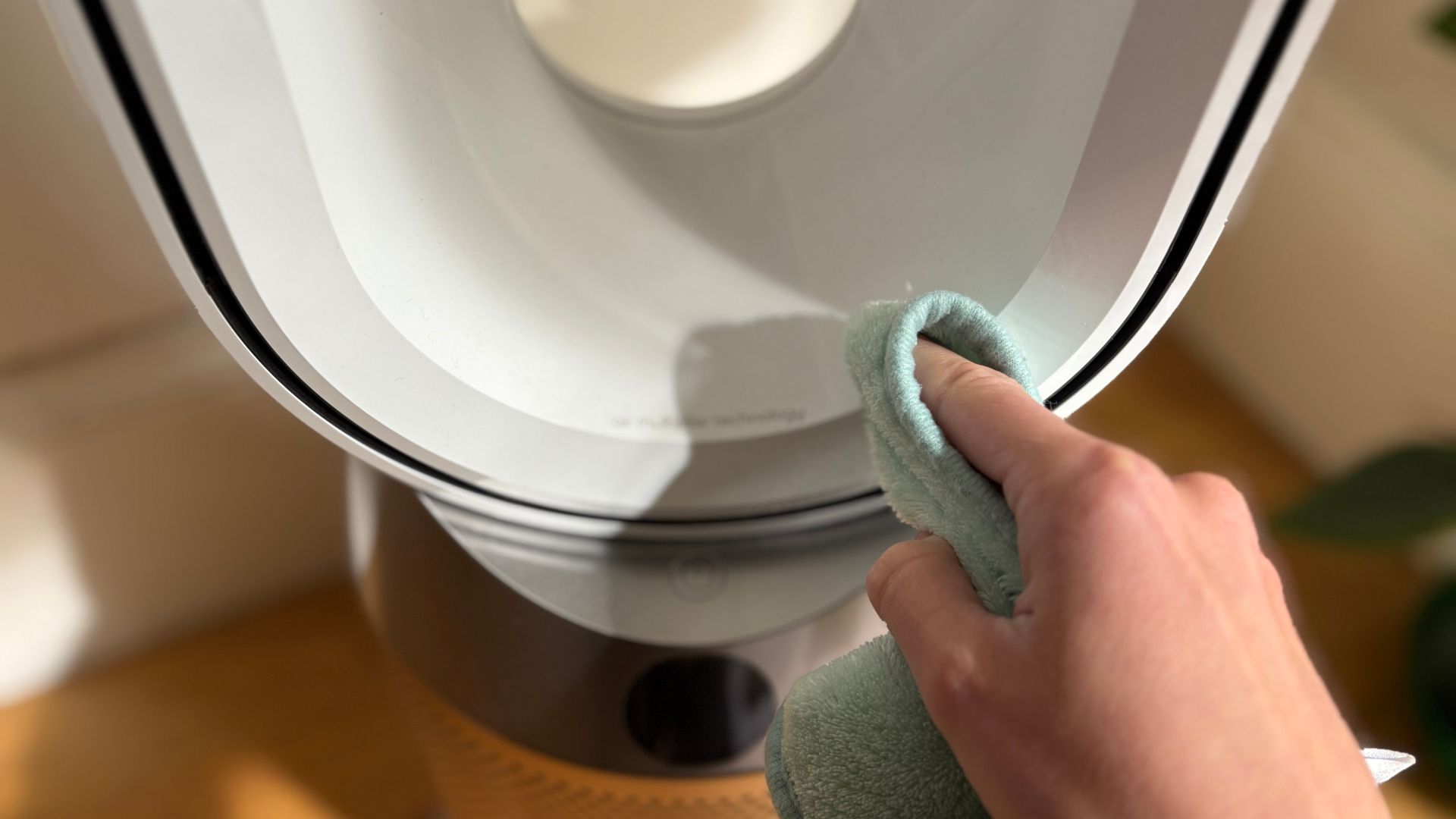
the rest of the maintenance is as simple as the swipe of a cloth over the fan. It'll collect some dust and the white surface shows this off (only when you're close), but if you're a perfectionist like me, you'll just want to give it a once-over with a cloth every week or so. I'd recommend checking out our expert's guide for how to clean a tower fan to find out more.
How does the Dyson Hot + Cool Formaldehyde Fan compare?
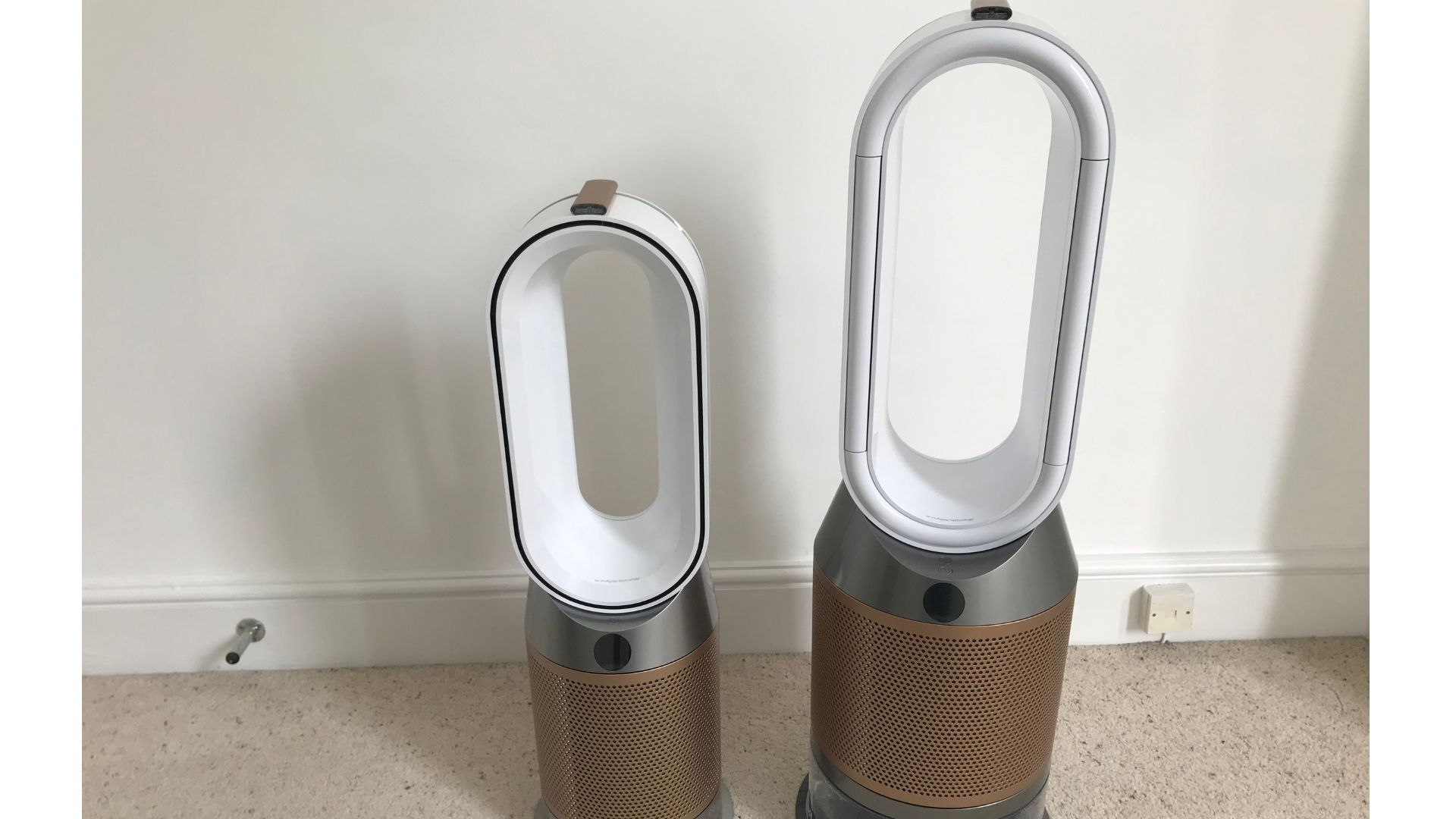
I've made no secret of the fact that this is one of the best air purifiers and best cooling fans on the market. If it was a little cheaper, it would easily sit at the top of the buying guide, because it's elegant, versatile, and really thoughtfully designed.
If you look at our buying guide for air purifiers, you'll see the MeacoClean CA-HEPA sits above the Dyson as an air purifier. Even after spending months with the Dyson, I stand by it. The Meaco is one-third of the price, it's smaller, and it's even quieter than the Dyson too. In fact, it's actually the smallest air purifier that we've tested, which is great news for city dwellers and small homeowners. Even though it's a little less energy efficient than the Dyson, it's still a great model.
Whilst the Dyson's app is useful, the Meaco has a useful set of smart controls and a simple control panel on top. The Dyson can't be controlled by touching the device, which sounds strange, I know. You have to have the remote or your app open. With the Meaco, you have a range of options: app control, voice control, and the touch panel.
In practice, this was quick and effective at cleaning the air in a 30m² room. I'd say the Dyson's performance was comparable, especially since both claim to be able to remove particulates and gases from the air. Overall, the choice between the two comes down to price, aesthetics, and versatility: the Dyson is more expensive, but it's also more beautiful, and it combines the functions of three appliances into one. The Meaco isn't quite as beautiful, but it's smaller, cheaper, and (dare I say) a little smarter.

Should you buy it?
If you're looking at the Dyson Hot + Cool Formaldehyde fan because you want a cooling fan, there are some other options worth considering too. The Dyson Cool CF1 is brilliant as a desktop model, which can sit on a bedside table or surface to keep you cool when you sleep or work. It's speedy and can power some almost silent but icy air your way. I've found the Cool CF1 to be a brilliant aid when I want to cool my room down at night. Of course, it's still expensive and less versatile than the Hot + Cool, but it's handy for smaller spaces and still boasts Dyson's signature stamp of style.

There's no denying that the Dyson is an impressive air purifier. I'm usually wary when appliances combine multiple functions into one device because usually it means compromising on all three in one way or another. However, Dyson delivered impressive performances across the board. Whilst this is bigger than some models, it wasn't too much for my city flat, so I think you could make space for it if you wanted to. My only reservation is on the price. If you can pick up a deal on the Dyson or you can justify it as an investment in three appliances, you'll love this, just brace yourself (and your wallet) for the big hit.
FAQs
Does the Dyson really remove formaldehyde?
There have been clinical, scientific reviews done by Dyson and independent companies that have proven that this fan continuously destroys formaldehyde. If you want the technical details, I recommend having a look at Live Science's content.
Does Dyson Hot + Cool actually cool a room?
Absolutely - I've been through two very hot summers, without aircon, in a greenhouse room and this is icy cold. It's brilliant.
How do I reset the Dyson?
Dyson recommends that you "press and hold the power button on both the main body and the remote control. Continue to hold the buttons until the LCD screen shows a countdown timer." Once the countdown ends, the machine has re-set.
If you have any trouble with your fan, Dyson's support team is fantastic. I have had calls with them on an issue with my vacuum, but I have also had many other comment on how impressively quick and responsive the team is.
How we test
At woman&home, we take our tests seriously. The Dyson, promising results for three different product categories (air purifiers, cooling fans, and heaters) had to go through three times as much testing as other models, but that's why I'm so sure that this is worth the money.
When it comes to how we test air purifiers, it's not always easy to see the results, but we've found methods for assessing them in ways that are useful to you. I burn candles, cook, burn food, dust, and cook, whilst keeping an eye on the Dyson's chart for the air quality. This is something that I've found useful to look at consistently. There's also the nose test: I can tell when my room stops smelling like smoke or paint, so I can tell you in a very practical sense whether it's any good.
The next test was on heating and cooling. This, again, is really a matter of efficiency and speed. I used this over the whole winter, warming big rooms without any other heating. I also tested this on cooling over the summer, using this in my greenhouse of a lounge as well as the bedroom when the nights were hot and sticky. You can see more on how we test cooling fans over here if you're interested.
Aside from the practical tests, we also make sure to give you notes on other factors relevant to each air purifier. We'll let you know what it's like to unbox, how often it needs cleaning, whether there are any extra touches and special features, and how it compares to other models on the market. That way, if you choose to invest in one of these, you'll know exactly what you're getting yourself in for. We only like good surprises here.

Laura is woman&home's eCommerce editor, in charge of testing, reviewing and creating buying guides for the Homes section, so you'll usually see her testing everything from the best dehumidifiers to sizing up the latest Le Cruset pot. Previously, she was eCommerce editor at Homes & Gardens magazine, where she specialised in covering coffee and product content, looking for pieces tailored for timelessness. The secret to her heart is both simplicity and quality. She is also a qualified Master Perfumer and holds an English degree from Oxford University. Her first editorial job was as Fashion writer for The White Company.
You must confirm your public display name before commenting
Please logout and then login again, you will then be prompted to enter your display name.